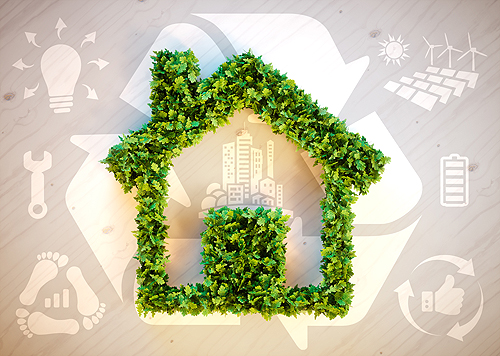Greenest Practices in the Construction Industry
The construction industry is consistently booming in both commercial and residential sectors everywhere. With more construction, however, comes more materials and energy needed to build and maintain these structures.
Many populations are concerned about the sustainability of new construction projects, especially for the natural environment around them. With just a few simple practices, the construction industry can significantly reduce its carbon footprint and improve the sustainability of its businesses and projects, providing more efficient structures for owners to use.
Building Materials
Building materials are arguably the most essential tools the construction industry can use. When a construction company chooses materials wisely, they last longer, are more durable, do not waste limited resources, and do not harm the environment when broken down. Additionally, limiting plastic and other harmful materials can substantially improve sustainability.
Recycled Materials
A construction team can significantly reduce resource waste and carbon footprint by incorporating recycled materials into their projects. Using reclaimed wood, recycled metal, glass, and other materials reduces the demand for new resources and minimizes the environmental impact of waste disposal. If a company must use plastic or other synthetic materials, they should consider using more biodegradable counterparts or recycled plastic when applicable.
Sustainable Materials
In addition to recyclable materials, construction teams can also turn to more sustainable materials, such as cork, bamboo, and other renewable resources. They can also utilize green insulation materials, such as cotton, to reduce toxic materials in home construction and improve heating and cooling efficiency.
Energy-Efficient Installations
New structures and renovated buildings should install energy-efficient appliances, windows, and lighting options to provide greener solutions for property owners. Allowing construction sites and structures to utilize solar panels or wind turbine energy can significantly reduce resource strain. When construction companies use more natural materials and fewer toxic substances, they can improve air quality considerably for both owners and the overall ecosystem.
Waste Management
Construction sites can create a lot of waste, particularly with demolitions. When construction companies recycle all possible materials and use proper waste disposal methods, they can significantly reduce their carbon footprint. They can also incorporate efficient construction practices, such as hydro-demolition with recycled water to reduce material waste.
Water Conservation
Plumbers can utilize sustainable practices, training, and techniques to install more efficient building plumbing and conserve water. For construction procedures requiring water, companies can collect rainwater (if legal) or recycle water onsite to avoid waste. Construction projects can use sustainable water conservation practices, such as eco-friendly, treated well-water in their structures.
Efficient Building Design
Construction teams can partner with architects and owners to create more sustainable building designs. They can incorporate a location’s natural climate and determine more energy-efficient practices regarding natural lighting, building orientation, and ventilation. These practices reduce the energy needed for heating, ventilation, and air conditioning (HVAC) systems, including air quality improvements.
Construction Team Training
On-site construction teams significantly reduce their carbon footprint with more efficient training on eco-friendly and sustainable practices, including waste reduction. Construction supervisors can also familiarize themselves with the latest industry standards and regulations on sustainable practices; additional construction supervisors may be more efficient in training in green construction practices.
You can obtain the education needed and learn the requirements to become a supervisor using local search terms such as ‘MA construction supervisor license exam.’
Hazardous Materials
Construction companies, owners, and architects should remain current with protocols and procedures regarding hazardous materials in buildings, including incorporating safer and more eco-friendly replacements when applicable. While construction projects, particularly renovation projects, may not eliminate dangerous materials such as asbestos altogether, proper protection and disposal can significantly reduce their health impact on the environment and construction teams.
Structure Repurposing
Construction companies may have differing choices of what type of projects they complete. However, when applicable, repurposing abandoned or rundown buildings is much more beneficial to the environment than new construction, as you are reusing materials and using fewer resources to renovate than to construct.
By repurposing an existing structure, new land isn’t typically required, eliminating further destruction of the local environment. There are also many tax incentives for repurposing historical buildings in specific locations.
Green Buildings (Literally)
One of the more popular unique building trends is to utilize botanical elements in a building’s construction. Garden or grass roofing, greenhouse structures, and botanical patios are great ways to improve air quality, provide locations for wildlife to flourish, and reduce the use of toxic materials in building construction.
Concerns about the sustainability and eco-friendly practices of the construction industry are valid. Many companies utilize hazardous materials, improper waste disposal, and avoid recycled materials.
However, incorporating greener practices can significantly reduce environmental harm, build a better reputation for the construction industry, and save costs for all parties involved. For example, using sustainable and recycled materials in construction, reducing unnecessary waste, and keeping the team up-to-date on environmentally friendly practices can make a significant difference.
